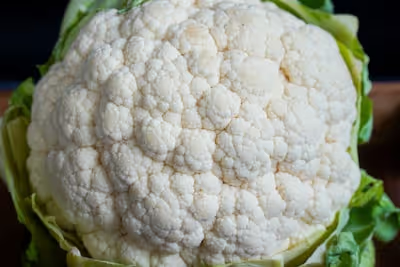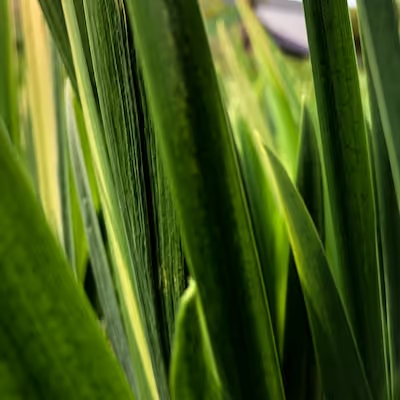Growing Broccolini: How to Ensure a Healthy, Tasty Harvest

Growing Broccolini
Growing broccolini brings crisp, flavorful rewards if you start by planting seeds directly into fertile, well-drained soil in early spring. Keep it thriving with steady moisture, partial sun, and regular feedings of nitrogen-rich fertilizer. Harvest stalks early and often—growing broccolini at home offers delicious, tender shoots far superior to store-bought varieties. Read on to master your broccolini crop, from seed to sauté pan.
Cheatsheet: Fast-Track to Prime Broccolini Yields
🌱 Soil & Location
Full sun (6+ hrs). Rich, well-drained soil. pH 6.0-7.0. Add compost or aged manure. Rotate crops yearly to prevent disease.
📅 Sowing & Timing
- Start indoors 6 weeks before last frost or direct sow when soil hits 50°F (10°C).
- Transplant at 3-4 true leaves, spacing 8 in (20 cm) apart.
💧 Water & Feeding
- Water 1-1.5 in (2.5-4 cm) weekly. Keep soil moist but never soggy.
- Top dress with organic fertilizer every 3 weeks.
🛡️ Pests & Disease
- Use floating row covers for cabbage worms.
- Remove yellow leaves promptly to stop mildew spread.
- Companion plant with garlic or marigold to deter aphids.
✂️ Harvest & Storage
- Harvest main stem at 6-8 in (15-20 cm), before flowers open (about 55-70 days).
- Side shoots yield more for weeks—keep picking!
- Refrigerate unwashed, use within 5 days for top flavor.
🥗 Nutrition & Self-Reliance
Rich in vitamin C & K. 1 cup = 35% daily fiber. Boosts antioxidants and supports immunity. Homegrown broccolini contains up to 30% more nutrients vs. store-bought.
🛠️ Tools and Products You’ll Need
- Broccolini seeds (or starts)
- Organic compost
- Garden fork or trowel
- Watering can or drip hose
- Sharp pruners or scissors
- Floating row cover (optional)
-
Growing Broccolini: the sweet-stem brassica I plant twice a year
I grow broccolini for the tender stems and smoky-sweet florets that char beautifully on a grill pan. The plants keep throwing side shoots for weeks if you treat them right.
What broccolini actually is
Broccolini is a broccoli x gai lan hybrid bred for slender stems, small florets, and fast regrowth. You may see it sold as Tenderstem or broccoletti, and for gardeners it behaves like a compact, quick broccoli with better texture.
I find it happiest in cool weather, with spring and fall plantings giving the best flavor and the least pest pressure. Heat makes it race to flowers.
“Brassicas prefer firm, fertile soil with a pH around 6.5.” — Royal Horticultural Society
Site and soil that pay off
- Sun: Full sun, 6 to 8 hours minimum. Partial shade helps during hot afternoons.
- Temperature sweet spot: 60 to 70 F 16 to 21 C. Plants tolerate 28 F minus 2 C with light cover.
- Soil: Loamy, well drained, rich in organic matter. I target pH 6.4 to 6.8.
- Nutrition: Brassicas are heavy feeders. A soil test steers nitrogen and flags boron or sulfur shortfalls that cause hollow stems and flat flavor.
- Bed prep: Work in 1 to 2 inches 2.5 to 5 cm of compost plus a balanced pre-plant fertilizer at label rate. Firm the bed with the back of a rake for strong anchoring roots.
Timing that keeps harvests rolling
For spring, start seeds indoors 4 to 6 weeks before last frost and transplant 1 to 3 weeks before it. For fall, sow 10 to 12 weeks before first frost to hit that cool window.
Most broccolini matures in 50 to 60 days from transplant. Fall crops taste sweeter for me after a light frost.
Seeds vs starter plants
- Start from seed if you want variety choice, lower cost per plant, and earlier spring harvests. Use a heat mat at 70 to 75 F 21 to 24 C for quick germination.
- Buy transplants if timing got away from you. Choose sturdy, short plants with no yellowing or flowers.
Planting layout that breathes
- Spacing: 10 to 12 inches 25 to 30 cm in-row, 18 to 24 inches 45 to 60 cm between rows. Tighter spacing works if fertility and water are steady.
- Depth: Set transplants to the first true leaves. Water in with a kelp or mild fish emulsion to ease shock.
- Mulch: Lay 2 to 3 inches 5 to 7.5 cm of straw or shredded leaves to keep roots cool and moisture even.
Watering you can set your watch by
Give 1 to 1.5 inches 25 to 38 mm of water per week, more on sand. I run drip at 0.5 to 1 gallon per hour emitters and keep the soil consistently damp, not soggy.
Uneven moisture toughens stems and speeds bolting in heat. That’s when flavor drops off.
Feeding schedule that movers and shakers use
- Pre-plant: Incorporate a balanced organic fertilizer around 4-4-4 at 4 to 6 pounds per 100 square feet 195 to 295 g per m².
- Side-dress: At 3 and 6 weeks after transplant, give nitrogen such as blood meal 12-0-0 at 0.5 cup per 10 feet 120 ml per 3 m of row or a soluble feed at 50 to 75 ppm N.
- Micros: If soil test shows low boron, I apply 0.5 teaspoon borax per 10 square feet 2.5 ml per 0.9 m², mixed into water, once. Do not repeat without a test.
Heat, cold, and bolting control
Above 80 F 27 C, plants tend to stretch and set loose, bitter buds, so I use 30 percent shade cloth during spikes and keep soil mulched. In early frosts, a row cover keeps growth steady.
Pick often and irrigate before heat to keep sugars up. Stress writes itself into the taste.
Pest playbook that actually works
- Flea beetles: Floating insect netting from day one prevents the shot-hole mess. Trap crops of radish pull them off your broccolini.
- Cabbageworms and loopers: Handpick in the morning and spray Bt kurstaki at label rate when you see new frass. Reapply after rain.
- Aphids: A hard water jet, insecticidal soap, and flowering borders for hoverflies keep colonies in check.
- Harlequin bug: Row covers early and fall sanitation. Remove old brassica stumps that harbor eggs.
- Clubroot and downy mildew: Rotate 3 years out of brassicas, lime to pH near 7 if clubroot is present, and avoid overhead irrigation late in the day.
“Bt targets caterpillars and spares most beneficials when used correctly.” — University of California Statewide IPM Program
Harvest method for tender stems
Cut the central stem at 6 to 8 inches 15 to 20 cm while buds are tight and dark. Then the plant throws a dozen side shoots over the next few weeks.
Frequent picking signals the plant to keep producing. Skip a week and it sulks.
Postharvest handling that keeps it sweet
I dunk stems in ice water for 3 to 5 minutes, drain, and chill immediately. Keep them at the coldest corner of the fridge with high humidity.
“Optimum storage for broccoli is 32 F 0 C and 95 to 100 percent relative humidity.” — UC Davis Postharvest Technology Center
Cooking notes from the bed to the pan
Stems carry the sweetness. I blanch 60 seconds, dry, and scorch in a ripping hot skillet with garlic, lemon, and good oil.
Morning harvests taste sweeter thanks to higher leaf sugars, and that shows up in the pan. Evening cuts lean earthier.
My reliable varieties for Growing Broccolini
- Aspabroc: Classic broccolini type with long stems and mild bite. About 50 to 60 days and prolific side shoots.
- Happy Rich: Broccoli x gai lan with glossy florets and steady side-shoot production. Handles summer better for me than most.
- Atlantis: Upright habit, uniform spears, and quick regrowth. Great for tight spacings.
- Burgundy: Purple-stem novelty with nutty taste that keeps color when lightly cooked. Kids actually ask for it.
- Sprouting broccoli types for shoulder seasons: Not broccolini, but similar cluster harvest style if you want deeper winter hardiness.
Alternatives if seed racks are bare
- Gai lan Chinese kale: Juicy stems, flat leaves, and lightning maturity in 35 to 45 days. Loves cool weather and light shade in summer.
- Rapini broccoli rabe: Bitter-chic and leafy with small buds. Great quick crop between main plantings.
- Classic broccoli: Choose compact, heat-tolerant hybrids for summer plantings, then follow with broccolini for a second wave of spears.
Gear and supplies I actually buy for Growing Broccolini
- Insect netting or light row cover to exclude flea beetles and moths from day one. Clips and hoops ready before transplant day.
- Soil blocks or deep cells 50 to 72 count for stout transplants. Avoid root-bound six-packs.
- Drip line with 12 inch 30 cm spacing for even moisture and clean foliage.
- Balanced organic fertilizer plus a nitrogen top-dress for heavy feeding. Keep a sack of blood meal or feather meal handy.
- Shade cloth 30 percent for heat waves above 85 F 29 C. It buys you tenderness.
Yield, flavor, and a little data
Across spring and fall, I average 1 to 1.5 pounds 0.45 to 0.68 kg of marketable spears per plant with steady water and two side-dressings. Skimp on nitrogen and you will feel it in stem diameter and head count.
Bitterness tracks stress and older buds, while sweetness tracks steady growth and cold snaps. Treat it like asparagus with a broccoli accent and the plant repays you.
Troubleshooting quick hits
- Loose, flowering buds: Heat or drought. Add shade cloth, water early, harvest sooner.
- Hollow or brown pith: Boron shortage or erratic water. Soil test, tiny boron correction, and even irrigation.
- Yellowing lower leaves: Nitrogen drawdown or water stress. Side-dress and mulch.
- Blue-green leaves with purple tinge: Phosphorus uptake slowed by cold soil. Wait for a warm stretch or use a light soluble feed.
Field notes from a stubborn grower
I plant broccolini right after pulling garlic and again after early potatoes, let the drip lines do the heavy lifting, and keep the netting on until first harvest. The first time I skipped the cover, flea beetles turned the leaves into lace and the stems went woody in a week.
Give it cool nights and steady fuel and it gives you spears that snap like green candy. Miss a picking and the plant gets theatrical, which looks cute and tastes tired.
Trusted references I lean on
- Royal Horticultural Society on brassica soil and spacing guidance.
- UC Davis Postharvest Technology Center for storage temperature and humidity targets.
- University of California Statewide IPM Program for caterpillar control with Bt and row cover strategies.
- Cornell Cooperative Extension and UC ANR vegetable production notes for timing, fertility, and rotation.
Frequently Asked Questions About Growing Broccolini
What type of soil promotes healthy broccolini growth?
Broccolini thrives in fertile, well-draining soil with a slightly acidic to neutral pH of about 6.0 to 7.0. Incorporate plenty of organic material, such as compost or aged manure, before planting to ensure adequate nutrients and soil structure.
How much sun exposure does broccolini need?
For healthy, vigorous plants, broccolini requires at least six hours of direct sunlight per day. A sunny spot helps the plants develop fully and produce tender stems and flavorful florets.
When is the best time to plant broccolini?
Plant broccolini in early spring or late summer, once temperatures consistently remain around 50°F to 75°F (10°C to 24°C). Cooler weather encourages steady, robust growth and prevents premature flowering.
What spacing should be used between broccolini plants?
For optimal growth, space broccolini plants about 12 to 18 inches (30 to 45 cm) apart, in rows spaced around 24 inches (60 cm) apart. This spacing allows adequate airflow, reducing the chance of pests and diseases.
How often should broccolini be watered?
Keep the soil consistently moist by providing about 1 to 1.5 inches (2.5 to 4 cm) of water per week, either from rainfall or supplemental watering. Avoid irregular watering patterns to prevent stress and encourage steady growth.
When is broccolini ready for harvesting?
Harvest broccolini approximately 60 to 70 days after planting, when the central stalks reach around 6 to 8 inches (15 to 20 cm) tall, and the florets remain tightly formed. Cut stems at an angle to encourage continued production.
How can broccolini pests be controlled naturally?
Reduce pest pressure by practicing crop rotation, using floating row covers, and encouraging beneficial insects such as ladybugs and lacewings. Inspect plants regularly and manually remove pests at their first appearance.
Growing Broccolini rewards patience and observation. Give it well-drained soil, regular watering, and just enough sun—watch how quickly those crisp, slender stems come to life. Keep an eye out for pests, harvest before the florets open, and you’ll taste that sweet, nutty flavor broccolini fans rave about. Rotate crops, keep beds tidy, and never underestimate the power of healthy soil. If you’re hungry to broaden your cool-season harvest, peek at growing broccoli or try related vegetables like cauliflower and purple cauliflower. Simple care, steady attention—these are the ingredients for broccolini that’s both healthy and downright delicious.
The Homesteader's Take: Sustainable Broccolini Cultivation
Saving Seeds for Self-Reliance
- Allow healthiest broccolini plants to flower after harvest.
- Let pods dry on plant until brown and brittle.
- Collect and store seeds in paper envelopes labeled with variety and date.
- Seed viability lasts up to 5 years if kept cool, dry, and dark.
Homemade Pest Control Solutions
- Neem Solution: Mix 2 tsp (10 ml) neem oil with 1 quart (1 liter) water, spray weekly to repel aphids.
- Garlic Spray: Blend 3 cloves garlic in 1 quart (1 liter) water, let sit overnight, strain and apply every 7-10 days against cabbage worms and caterpillars.
Companion Planting to Boost Yields
- Chamomile: improves flavor, attracts beneficial insects.
- Marigolds: repel nematodes and aphids naturally.
- Spinach: acts as living mulch, retains soil moisture, and suppresses weeds.
Zero-Waste Broccolini Uses
- Leaves and Stalks: sauté stems and leaves as nutritious greens rich in fiber, vitamins A, K, and calcium.
- Compost Roots: decomposing roots replenish nitrogen into soil, enhancing fertility.
Broccolini Nutrition Snapshot
One cup (150 grams) cooked broccolini provides about 100% daily vitamin C, 30% vitamin A, and 15% dietary fiber requirements, boosting immune health and aiding digestion.
Find out which plants will thrive in your garden!
Answer a few fun questions and get custom plant recommendations perfect for your space. Let’s grow something amazing together!

start your season





